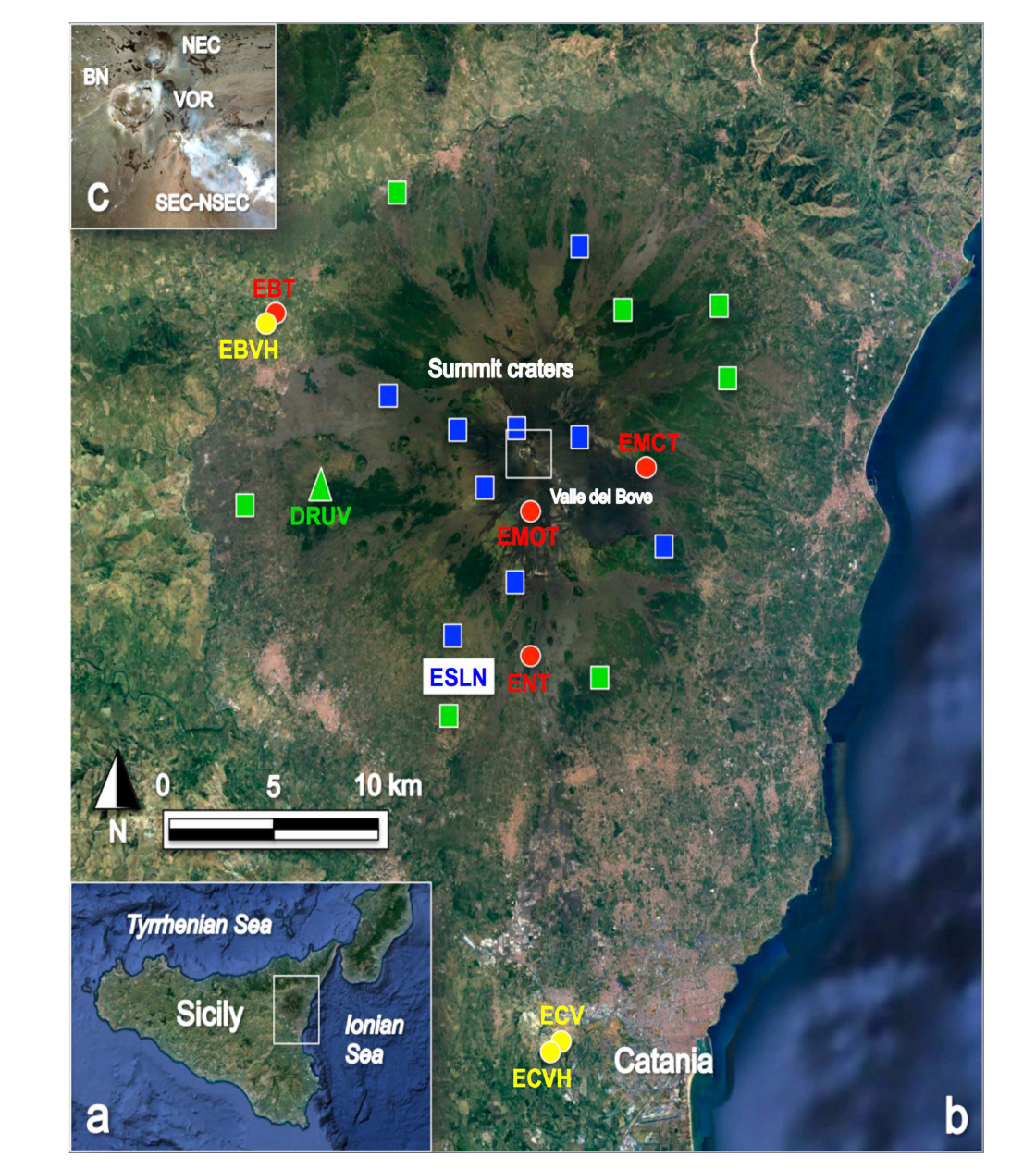Sicily
Explosive Paroxysmal Events at Etna Volcano of Different Magnitude and Intensity Explored through a Multidisciplinary Monitoring System
Sonia Calvari, Emilio Biale, Alessandro Bonaccorso, Andrea Cannata, Luigi Carleo, Gilda Currenti, Giuseppe Di Grazia, Gaetana Ganci, Adriana Iozzia
problematic: Explosive Paroxysmal Events at Etna Volcano of Different Magnitude and Intensity Explored through a Multidisciplinary Monitoring System
description: etween 13 December 2020 and 21 February 2022, Etna volcano produced a sequence of 66 paroxysmal explosive eruptions, with Strombolian activity at the summit craters climaxing in lava fountains and eruption columns extending several kilometers above the craters, accompanied by minor and short-lasting lava flows from the crater rim. We selected three of these episodes that occurred within a short space of time, between 13 December 2020 and 12 March 2021, of different magnitude (i.e., erupted volume) and intensity (i.e., mass eruption rate or instantaneous eruption rate), and analyzed them from a multidisciplinary perspective. The aim was to gain insights into those parameters that mostly reveal the eruptive process for hazard assessment purposes. The mul- tidisciplinary data consist of calibrated visible images, thermal images, seismic and infrasound data, ground deformation detected from the strainmeters, as well as satellite SEVIRI images. From these data, we obtained the timing of each paroxysmal event, the erupted volume in terms of tephra and lava flows, and the corresponding deflation of the source region, together with the development of the lava fountains and eruption columns with time. The results enabled determining that the small- est episode was that of 13 December 2020, which comprised three distinctive pulses but did not produce an eruptive column detectable from either monitoring cameras or satellites. The 28 Febru- ary 2021 episode was remarkable for the short amount of time required to reach the climax, and was the most intense, whereas the 12 March 2021 event showed the longest duration but with an inten- sity between that of the previous two. Our results show that these three paroxysmal events display a typical trend, with the first event also being the smallest in terms of both erupted volume and intensity, the second being the most intense, and the third the one of greatest magnitude but less intense than the second. This is coherent with the end of the first paroxysmal phase on 1 April 2021, which was followed by 48 days of eruptive pause before starting again. In this context, the end of the paroxysmal phase was anticipated by a more effusive episode, thus heralding a temporary de- cline in the gas content within the feeding magma batch.
